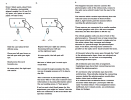Source: https://twitter.com/rpowell2u/status/1765723752690508107
The PDF is attached, and I've converted it to a slightly more readable XLSX format,
It's an interesting collection.
Lights and Starlink Satellites
57 of the 69 FAA reports involved seeing lights at night. Some of those 57 are sightings of Starlink satellites. Some of the comments by the pilots mention that they suspect they're looking at Starlink satellites. Of course, some of those lights are not satellites. My estimation, without thoroughly investigating each case, is that at least 44 of those 57 nighttime reports are likely Starlink. (By the way, a professor in SCU is working on a program that will help identify Starlink satellites based on how they would appear to a pilot at a given date, location, altitude, and bearing.)
I'll see if I can import them into Sitrec and then do various things with them.Robert Powell said:
We should check each of the night time sighting for this. Using the excel data we should be able to write (or find) an equation that lets us calculate the elevation to the sun for any given Lat/long/date/time.
https://en.wikipedia.org/wiki/Position_of_the_Sun#Declination_of_the_Sun_as_seen_from_Earth
Possibly it's because the light is dimming at the end, like a headlight turning away?I believe the turning effect is an optical illusion caused by the angle of observation near the horizon and the light being distorted or the auto kinetic effect from staring at them in a dark environment.
There's the "blind spot" in the human eye, with the well-known result that staring at one particular spot makes it vanish. The same thing happens when I lie in bed and try to stare at the tiny light on my smoke detector, and it disappears.I believe the turning effect is an optical illusion caused by the angle of observation near the horizon and the light being distorted or the auto kinetic effect from staring at them in a dark environment.
And, on occasion, this coincides with the appearance of another one fading in and traveling along a different path.Possibly it's because the light is dimming at the end, like a headlight turning away?
have you shown this to Robert Powell?I've added an FAA2023 sitch
https://www.metabunk.org/sitrec/?sitch=faa2023
https://www.metabunk.org/sitrec/?sitch=faa2023
It just takes the Lat/Lon from each row of the spreadsheet and puts a green marker at the location (except the 3-21-2023 case, which has no location). Use the mouse to select a case. It will set the time and the location.
You can also use the N and M keys to cycle through them.
A quick look shows 34 that are in or near the flare band.
I have now!have you shown this to Robert Powell?
Going a bit off-topic: Ann K's correct that fixatedly staring at a small visual stimulus can make it vanish, perhaps most easily demonstrated by focussing on an isolated star in the night sky. Alteration of gaze (and, usually, blinking) makes the object re-appear. The "vanishing" is caused by temporary neural adaptation.There's the "blind spot" in the human eye, with the well-known result that staring at one particular spot makes it vanish.

It seems to be more complex than that. The 'fovea', which is the part of the eye where we see detail the best, is located in the centre of our field of vision. However, it contains very few 'rods' (the cells which detect dim stars and other low-light phenomena) so it is best to observe dim stars (and other night-time phenomena such as low-magnitude satellites) with 'averted vision', that is to say, looking slightly to the side of the object.Ann K's correct that fixatedly staring at a small visual stimulus can make it vanish, perhaps most easily demonstrated by focussing on an isolated star in the night sky. Alteration of gaze (and, usually, blinking) makes the object re-appear. The "vanishing" is caused by temporary neural adaptation.
I find averted vision works best for objects such as the Andromeda Galaxy and Orion Nebula, which appear almost invisible if I look at them directly.Averted vision works because there are virtually no rods (cells which detect dim light in black and white) in the fovea: a small area in the center of the eye. The fovea contains primarily cone cells, which serve as bright light and color detectors and are not as useful during the night. This situation results in a decrease in visual sensitivity in central vision at night. Based on the early work of Osterberg (1935), and later confirmed by modern adaptive optics,[7] the density of the rod cells usually reaches a maximum around 20 degrees off the center of vision
